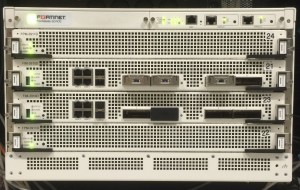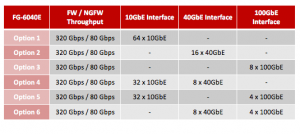Setup
For information about installing the FortiAuthenticator unit and accessing the CLI or GUI, refer to the Quick Start Guide provided with your unit.
This chapter provides basic setup information for getting started with your FortiAuthenticator device. For more detailed information about specific system options, see System on page 23.
The following topics are included in this section:
- Initial setup l Adding a FortiAuthenticator unit to your network l Maintenance l CLI commands
- Troubleshooting
Initial setup
The following section provides information about setting up the Virtual Machine (VM) version of the product.
FortiAuthenticator VM setup
Before using FortiAuthenticator-VM, you need to install the VMware application to host the FortiAuthenticator-VM device. The installation instructions for FortiAuthenticator-VM assume you are familiar with VMware products and terminology.
System requirements
For information on the FortiAuthenticator-VM system requirements, please see the product datasheet available at http://www.fortinet.com/products/fortiauthenticator.
FortiAuthenticator-VM has kernel support for more than 4GB of RAM in VM images. However, this support also depends on the VM player version. For more information, see: http://kb.vmware.com/selfservice/microsites/search.do?language=en_
US&cmd=displayKC&externalId=1014006
The default Hardware Version is 4 to support the widest base of VM players. However you can modify the VM Hardware Version by editing the following line in the FortiAuthenticator-VM.vmx file:
virtualHW.version = “4”
FortiAuthenticator-VM image installation and initial setup
The following procedure describes setup on VMware Fusion.
Initial setup
To set up the FortiAuthenticator VM image:
- Download the VM image ZIP file to the local computer where VMware is installed.
- Extract the files from the zip file into a folder.
- In your VMware software, go to File > Open.
- Navigate to the expanded VM image folder, select the FortiAuthenticator-VM.vmx file, and select Open. VMware will install and start FortiAuthenticator-VM. This process can take a minute or two to complete.
- At the FortiAuthenticator login prompt, enter admin and press Enter.
- At the password prompt, press Enter. By default, there is no password.
- At the CLI prompt enter the following commands:
set port1-ip 192.168.1.99/24 set default-gw 192.168.1.2
Substitute your own desired FortiAuthenticator IP address and default gateway.
You can now connect to the GUI at the IP address you set for port 1.
Suspending the FortiAuthenticator-VM can have unintended consequences. Fortinet recommends that you do not use the suspend feature of VMware. Instead, shut down the virtual FortiAuthenticator system using the GUI or CLI, and then shut down the virtual machine using the VMware console.
Administrative access
Administrative access is enabled by default on port 1. Using the GUI, you can enable administrative access on other ports if necessary.
To add administrative access to an interface:
- Go to System > Network > Interfaces and select the interface you need to add administrative access to. See Interfaces on page 30.
- In Admin access, select the types of access to allow.
- Select OK.
GUI access
To use the GUI, point your browser to the IP address of port 1 (192.168.1.99 by default). For example, enter the following in the URL box:
Enter admin as the UserName and leave the Password field blank.
HTTP access is not enabled by default. To enable access, use the set ha-mgmtaccess command in the CLI (see CLI commands on page 19), or enable HTTP access on the interface in the GUI (see Interfaces on page 30).
For security reasons, the host or domain names that the GUI responds to are restricted. The list of trusted hosts is automatically generated from the following:
Adding a FortiAuthenticator unit to your network
l Configured hostname l Configured DNS domain name l Network interface IP addresses that have HTTP or HTTPS enabled l HA management IP addresses
Additional IP addresses and host or domain names that the GUI responded to can be defined in the GUI Access settings. See GUI access on page 34
Telnet
CLI access is available using telnet to the port1 interface IP address (192.168.1.99 by default). Use the telnet -K option so that telnet does not attempt to log on using your user ID. For example:
$ telnet -K 192.168.1.99
At the FortiAuthenticator login prompt, enter admin. When prompted for password press Enter. By default there is no password. When you are finished, use the exit command to end the telnet session.
CLI access using Telnet is not enabled by default. To enable access, use the set ha-mgmt-access command in the CLI (see CLI commands on page 19), or enable Telnet access on the interface in the GUI (see Interfaces on page 30)
SSH
SSH provides secure access to the CLI. Connect to the port1 interface IP address (192.168.1.99 by default). Specify the user name admin or SSH will attempt to log on with your user name. For example:
$ ssh admin@192.168.1.99
At the password prompt press Enter. By default there is no password. When you are finished, use the exit command to end the session.
Having trouble configuring your Fortinet hardware or have some questions you need answered? Check Out The Fortinet Guru Youtube Channel! Want someone else to deal with it for you? Get some consulting from Fortinet GURU!



